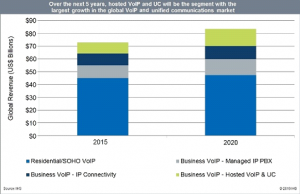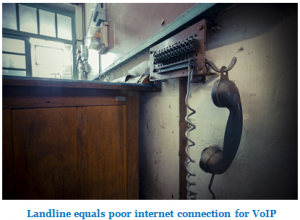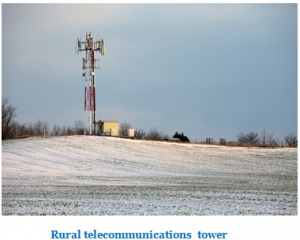The Future of VoIP Calling Looks Bright

Telecom analysts consistently predict growth – as high as 28% in the next four years [1] – for the world’s Voice over Internet Protocol (VoIP) markets. It makes sense that consumers are rapidly adopting the technology. VoIP calling is a fraction of the cost of traditional calling and has a higher potential call quality. Unfortunately, the benefits of VoIP calling are (literally) lost in many rural areas.

VoIP, which includes calling services like Skype, Facetime, Facebook Messenger, WhatsApp, Vonage, and Viber, transmit voice over online digital networks instead of analog phone networks. Digital networks are more efficient than both wireline phone networks (landlines) and wireless phone networks (cellular). This means the cost per minute of a VoIP call might be around 10% of a traditional call.
Last year, the global VoIP market grew 5% to $73 billion USD [2]. Business to business services bolstered growth as call centers and companies switched to cheaper (and now reliable) business VoIP services. In North America, a highly competitive market (great for consumers) stunted growth as services slashed prices to attract customers.

The global expansion of reliable 3G and 4G LTE networks (particularly in less developed countries in Asia) leads analysts, like the ones at Technavio who predicted 28% market growth between 2016 and 2020, to predict large growth. These analysts say that mobile VoIP use, which is far more convenient for consumers than desktop use, will drive growth.
Where mobile broadband is not strong, however, mobile VoIP use can be frustrating and impractical. Rural users around the world, even in the highly competitive North American market, often struggle with substandard VoIP call quality where wireless networks are weak.
The sound quality of a VoIP call depends on the service’s protocols, first, and on the strength of your internet connection, second. In the early days of VoIP, one could often attribute bad call quality with poorly coded protocols. These days, software engineers have worked out most of the technology’s early kinks and poor Voip calling quality is almost always the result of a slow internet connection.

Unlike other online activities, VoIP calling eats bandwidth symmetrically. This means you need both a fast upload speed and a fast download speed. At the very minimum, your connection should satisfy the following recommendations (per simultaneous call):
VoIP Calling Bandwidth Recommendations:
Upload speed/uplink At least 100 Kbps
Download speed/downlink At least 100 Kbps [3]
Latency/ping Less than 150 ms [4]
Quality of VoIP Calling
Twenty percent of VoIP calls are unacceptable quality due to the bandwidth constraints of a slow internet connection [5]. Even if your connection satisfied the recommendations above, your call could be lost if you use your internet for other tasks simultaneously. The percentage of unacceptable calls is, also, growing as 4G LTE networks become congested with more and more unique users.
VoIP technology makes a lot of sense. It’s easier for telecoms to implement (no lines to lay), more efficient to run, cheaper for users, and has the potential to sound better than analog. If, however, the service excludes rural dwellers due to slow internet connections, the overall value of the system will break down.
Luckily, policy makers like the United States government recognize the importance of bringing powerful internet technologies to rural areas. The federal government, for example, has invested over $260 billion in mobile broadband expansion in the last seven years [6]. These funds will, hopeful, work to eliminate the rural dead zones that color the bright future of VoIP calling.
Call us to find the best internet package for your VoIP calling needs 1-866-439-6630.



